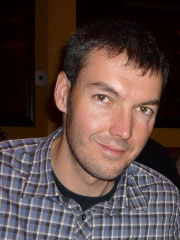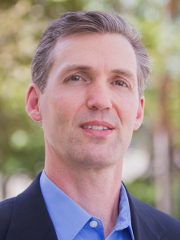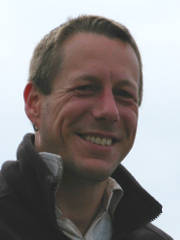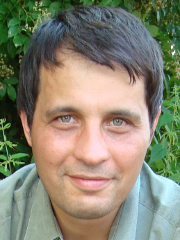Invited lecturers
Tomasz Stepinski, Space Informatics Lab, University of Cincinnati, Ohio, United States
Tomasz Stepinski is the Thomas Jefferson Chair Professor of Space Exploration at the University of Cincinnati, is a widely recognized researcher in the fields of automated mapping of planetary and terrestrial surfaces, and the auto-analysis of big geospatial data. Stepinski obtained the M.Sc. degree in astrophysics from Warsaw University and the Ph.D. degree in Applied Mathematics from the University of Arizona. Before arriving to Cincinnati, he has served for 20 years as a staff scientist at the NASA-funded Lunar and Planetary Institute in Houston, Texas. He is a Director of Space Informatics Lab:
Geomorphometry is the science of quantitative land-surface analysis. However, commonly used analytical tools work well only on small study areas, whereas very large DEM datasets are now available. Examples include SRTM which is large due to its global geographical coverage and numerous LIDAR datasets which are large due to their fine spatial resolution. Over the last few years we have developed a pattern-based approach aimed at analysis of land-surfaces on continental or global scales using medium resolution DEMs or at local land surfaces using very high resolution DEMs. For very large datasets a local geomorphologic reality is best assessed from a broader spatial context rather than form a given location and its immediate neighborhood. To translate this insight into a practical analytic tool we translate local DEM data into spatial categorical pattern. A limited number of categories corresponding to landform elements are calculated using geomorphons method. Similarity between two local patterns is a core concept that underpins tools for large scale land-surface analysis. All tools are collected into a GRASS GIS-based toolbox GeoPAT which is in a public domain (http://sil.uc.edu/gitlist/). Using GeoPAT allows addressing questions which would be difficult to even formulate without it. These include search and retrieval of similar landscapes based exclusively on their content, supervised and unsupervised automatic mapping of physiographic units, and fast comparison of different models or surface features extractions methods in a fashion reminiscent of change detection in remote sensing. Specific examples featuring 30 m datasets covering the entire surface areas of Poland and the United States will be presented demonstrating all new tools and their practical applications. We will also demonstrate implementation of landscape search and retrieval as a GeoWeb application.
Piotr Wężyk, Laboratory of Geomatics, University of Agriculture in Krakow, Poland
Assist. Prof. at the Laboratory of Geomatics. Professional experience in international research and development projects on: GIS, Photogrammetry, Remote Sensing, Image Processing (Stereomatching, GEOBIA), GNSS and LiDAR technology applications in: management and monitoring of the environment, nature protection from natural hazards and forestry sector. Chairman of the SIG Forestry at EARSeL. Involved in several national-wide projects in Poland: training of using the aerial photos (PHARE PL 1997-98), Geoportal.gov.pl (INSPIRE), Information System of Country Protection Against Extraordinary Hazards (ISOK) and co-operation with: Ministry of Environment, Head Office of Geodesy and Cartography, Polish State Forest, General Directorate of Nature Protection, National Parks and the public administration bodies.
Forests and water are the basic environments on maps from the early days of cartography but by its complexity very difficult for detailed mapping.The wooded areas a specially those covered by multi-layer evergreen dense vegetation are a challenge for detailed modelling of DTM because of lack of ground truth data. The traditional photogrammetry approach and the GNSS survey is very limited due to the dense canopy and multipath errors. Water bodies like: sea, lakes or rivers cause serious problems with measurement of the bed. Therefore the state of the art technologies are developed for wide-area precision mapping and 3D modelling. In the lecture the overview of the different remote sensing methods will be given through aerial and satellite stereo-photogrammetry, radar and specially the Airborne Laser Scanning (ALS) technology will be presented (topographic and bathymetric scanners). A special part of the presentation will concern the integration of ALS with Terrestrial Laser Scanning (TLS) technology. The precise DTM models besides his role in geomorphology, archaeology or landslide monitoring are crucial for the quality of the generation of derived products like normalised Digital Surface Models (nDSM). Those models (nDSM known also as Crown Height Models= CHM ) are very important e.g. for: foresters, ecologist and landscape planers. DTM mapping of river and see bed can deliver very important information concerning the natural environments and different hazards a specially when integration of multi-source information may led to continuous surface data. The using of TLS and handy scanners opens up new possibilities to capture and 3D modeling of underground surfaces such as caves or mines that can be integrated with DTM based on ALS.
Manfred Zink, Microwaves and Radar Institute, German Aerospace Center, Oberpfaffenhofen, Germany
Since the late 80s Dr. Manfred Zink has been working for DLR’s Microwaves and Radar Institute and has pioneered calibration techniques for both air- and spaceborne SAR sensors. He was the Lead Calibration Engineer for the SIR-C/X-SAR space shuttle missions in 1994 and for the Shuttle Radar Topography Mission in 2000. From 2000 to 2005 he was with the European Space Agency (ESA), where he was responsible for the calibration/validation of the ASAR onboard the ENVISAT satellite and later took the position of the Principal System Engineer for ESA’s TerraSAR-L Program. In 2005, he returned to the Microwaves and Radar Institute, where he is currently heading the Satellite SAR Systems Department and managing the TanDEM-X Mission and Ground Segment.
TanDEM-X is a challenging mission. It consists of a synthetic aperture radar interferometer with two almost identical satellites flying in a closely controlled formation. With a typical separation between the satellites of 150 to 500 m a global Digital Elevation Model (DEM) with 2 m relative height accuracy at 12 m posting is being generated. While data acquisition has been finished mid-2014, the processing of the global TanDEM-X DEM will be concluded by end 2015. Final DEMs for most of Australia, a large part of North America, South America, Africa and Siberia are already available for scientific and commercial applications. The results achieved so far are well within the expected performance for the global DEM. Beginning in October 2014, a 15-month science phase of the TanDEM-X mission offers the opportunity to generate DEMs with even higher accuracy for selected areas, and to explore and demonstrate the new scientific applications of this unique mission.
Christopher Crosby, Open Topography Group, United States
hristopher Crosby is Geodetic Imaging and OpenTopography Project Manager at UNAVCO in Boulder, CO, USA. Trained as a geologist, Crosby has worked on paleoseismology, earthquake geology, and active tectonics research in the western US, Caribbean, and Central Asia. He has expertise in the development of cyberinfrastructure to manage and improve access to earth science data and processing tools. Crosby is co-founder, co-PI, and manager of OpenTopography (http://opentopography.org), an NSF-funded portal to high-resolution topography data and tools. In addition, he manages the terrestrial laser scanning and InSAR programs at UNAVCO, a non-profit university-governed consortium funded by the US National Science Foundation and NASA, that facilitates geoscience research and education using geodesy.
OpenTopography (http://www.opentopography.org) is a U.S. National Science Foundation-funded web-based system designed to democratize access to earth science-oriented lidar and other topography data. OpenTopography provides free, online access to lidar data in a number of forms, including point clouds and associated geospatial tools for customized on-demand processing and analysis. Topographic data are co-located with processing tools to enable users to generate digital elevation models, and derived geomorphometric products and visualizations. This presentation will highlight examples of OpenTopography hosted-data used in natural hazards research and event response, and will also discuss strategies being explored to facilitate rapid and scaleable processing of topographic data following a natural disaster.
Tomasz Niedzielski, Institue of Geography and Regional Development, University of Wrocław, Poland
Tomasz Niedzielski works as a Professor at the University of Wrocław, Poland, and serves as a Head of Department of Geoinformatics and Cartography. He is an expert in modelling and prediction of numerous processes in Earth sciences, with a particular emphasis put on applications of mathematical models in hydrology, physical oceanography and geophysics. His expertise includes real-time systems for forecasting peak flows and for predicting dynamics of sea surface topography. Prof. Niedzielski’s background is applied mathematics and geography. He gained his doctoral and habilitation degrees at Warsaw University of Technology and the University of Wrocław. He also worked at the University of Aberdeen in the UK as well as in Polish research institutions: the Space Research Centre of Polish Academy of Sciences and Wrocław Centre for Networking and Supercomputing of Wrocław University of Technology.
One of the roles of geosciences is to provide the society with efficient tools that may diagnose or predict various environmental hazards. Floods are among such events, and hence there is an ongoing need to develop and improve hydrological models. However, especially in mountainous catchments which respond quickly to extreme rainfall, the need covers not only predictive models but also real-time systems that produce and publish up-to-date predictions with sub-hour update frequency. This includes forecasting both the hydrograph and inundation. The objective of the talk is to present a novel approach that integrates the real-time system for forecasting hydrograph, known as HydroProg, with the following two elements: the real-time inundation model that simulates the flood extent on the top of the Digital Elevation Model (DEM) and the on-demand monitoring of inundation using the unmanned aerial vehicle (UAV). Although skills of the hydrograph prediction models are relatively easy to assess, the problem arises when we want to evaluate the performance of inundation models. This can be done as a near real-time procedure, initiated automatically when the HydroProg and the associated inundation model produce flood alert, making use of the UAV for oblique photogrammetry. The UAV-taken aerial photographs enable production of orthophoto images which are utilized to check the accuracy of spatial predictions of flood extent. The prototype of the comprehensive integrated system is presented during the talk, and the results are based on the experimental implementation of the HydroProg system in the Nysa Kłodzka River basin (SW Poland).
Steve Kopp, Environmental System Research Institute, Redlands, CA, United States
Steve Kopp is a Program Manager on the Geoprocessing and Spatial Analysis team at Esri where he has been designing, testing, and writing about terrain analysis and diverse applications of GIS technologies for 25 years. He is an author, coauthor, and technical editor for numerous books, software manuals, and refereed journal articles related to spatial modeling, map projections, atmospheric science, and water resources, including Digital Elevation Model Technologies and Applications: The DEM Users Manual.
His areas of specific research interest include spatial modeling, surface hydrology, and dissemination of spatial science to a broadening community. Mr. Kopp has a Masters degree in Geography from Indiana State University with an emphasis in remote sensing and hydrology.
The explosion of easily accessible spatial data and apps is transforming the how scientists and citizens perceive geography. Nearly everyone with internet access now works with maps almost daily. For geospatial professionals, it has become easier to share their authoritative data with other scientists. It is now possible to create reliable, scalable web services, with no programming and limited IT skills. Access to better data is allowing scientists to create better models and forecasts. Web services, in this case analytic or geoprocessing services, provide a mechanism for modelers to easily share their authoritative modeling with others. An emerging pattern is to combine these services into simple web applications tailored for specific users. In the case of Geomorphometry use cases such as landslides and floods, such applications leverage web services to plan for a possible disaster event, inform the public about possible risk, and support timely response following a disaster.
Keynote Speakers
Marco Giardino, School of Natural Sciences, University of Torino, Italy.
Associate Professor at the School of Natural Sciences. Previously, researcher at the National Research Council. His studies in Applied Geomorphology (geothematic mapping, remote sensing) concern geodiversity and evolutionary processes of the alpine relief, the assessment of natural hazards and risks. He is also devoted to the protection of geoheritage and to Earth Science education. His partnerships: USGS Geologic Hazard Team; Université de Savoie; University of Lausanne, Tripura University, Simon Fraser University. He is a member of the Italian Glaciological Committee, secretary of the Association of European Geological Societies (AEGS), co-chair of the IAG/AIG (International Association of Geomorphologists ) Working Group on Landform Assessment for Geodiversity, and coordinator of the “geoNatHaz” project of EU-Canada university co-operation on natural hazards and risks.
Natural hazards and risks assessment in mountain areas is a challenging issue because of on going environmental changes associated with climate change and increasing impacts on infrastructure and socio‐economic and cultural activities. Since behaviour on mountain communities towards natural hazards is mostly influenced by the “perceived risk” than the “real risk”, research should be addressed both to accurate hazards modelling and targeted applications of new technologies for diffusion of scientific results. Geomorphometry can be useful for both accurate hazards modelling and targeted risks management. By means of a multidimensional approach (local, regional) to natural hazards and risks applied in mountain areas of the European Alps and the Canadian Cordillera, the paper will demonstrate the strategic roles played by accurate DEM derived data and targeted analytical tools by geomorphometry for:
1) enhanced accuracy of models of diverse geoenvironmental processes and
2) improved knowledge on natural hazards and awareness on natural risks
Markus Metz, GRASS Development Team, Fondazione Edmund Mach, Trento, Italy
Markus Metz studied biology in Cologne, Berlin, Munich and Oldenburg and finished his PhD in animal behaviour in 2005. As freelance GIS consultant he participated in various projects in southern Africa (evaluation of endangered ecosystems, soil mapping, hydrological modelling). Since 2011 he holds a postdoc position at the Fondazione Edmund Mach in Italy, developing climatic models for risk assessment of vector-borne diseases. He joined the GRASS GIS development team in 2007, maintaining modules for hydrological modelling and the GRAS GIS vector engine.
The lecture will start with a brief introduction to pre-processing of digital elevation models (DEM) with an emphasis on DEM preparation for hydrological modelling. The standard procedure for 2D hydrological modelling will be explained, as well as the deviation of some GRASS GIS modules from this standard procedure. The results of DEM-based 2D hydrological modelling (flow directions, surface flow accumulation, basin delineation) are the basis of further analytical steps. The lecture will then describe stream network extraction in GRASS GIS and illustrate methods for further stream network analysis. Finally, the capabilities of GRASS GIS to process big data will be illustrated.
Lucian Drăguţ, West University of Timisoara, Romania
PhD in geography is a lecturer at the West University of Timisoara, Romania. He has 15+ years of professional experience in teaching and research in Romania, Austria, United States, Japan and Canada. He is a specialist in Geographic Information Science, Geomorphometry, and Remote Sensing. Results of his research have been published in Geomorphology, Frontiers in Ecology and the Environment, International Journal of Geographical Information Science, Computers & Geosciences, Journal of Archaeological Science, ISPRS Journal of Photogrammetry and Remote Sensing, and book chapters. He has received two prestigious fellowships- Fulbright and Marie Curie- and served as a member in the Scientific Board of the Earth Sciences Committee, Romanian National Research Council.
This contribution provides an overview of object representation from digital elevation models in the context of specific geomorphometry and geomorphological mapping. It is shown that object representation (e.g. as landforms) in geomorphometry is a particular case of geographic data modelling, thus sharing a difficult question: how to discretize fields in order to represent them? Translation from continous models of altitude and its derivatives to landform divisions is challenged by scale and purpose. The current approaches to delineation of landforms are reviewd, with an emphasis on land-surface segmentation and its potential to geomorphometry.









